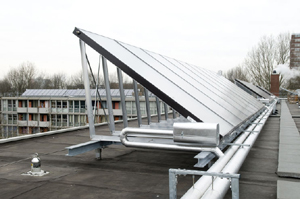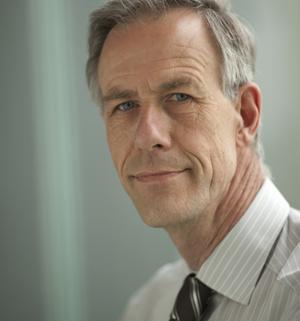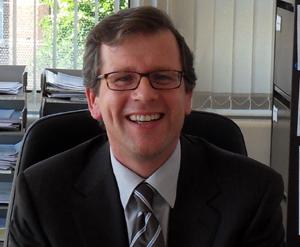Europe’s guerrilla war for energy efficiency
on
Europe’s guerrilla war for energy efficiency
Backed by the EU’s Concerto programme, 58 cities in Europe are carrying out energy efficiency and sustainability projects, often in very difficult circumstances, and sometimes with highly instructive results. The biggest challenge, says Rudy Rooth of Dutch consultancy Kema, who managed to install a biogas-fired district heating system in a low-income neighbourhood in Amsterdam, was ‘getting the tenants involved and enthusiastic’. Stefan Tostmann of the European Commission, who is responsible for the Concerto programme, is convinced of the tremendous potential “his” city projects offer. ‘I can already tell you that tremendous gains can be achieved, much more than the 20 percent the EU is currently aiming at.’
 |
| Ecostiler Amsterdam implemented a district heating system and installed solar panels for 300 showcase apartments |
One place where they managed to do just that – install a biogas-fired district heating system – is in the unlikely neighbourhood of Amsterdam Nieuw-West (“New West”), a low-income district of 70,000 inhabitants in Holland’s largest city. Here a programme is being carried out called Ecostiler, one of three “sister” projects under the same name. The other two Ecostiler-projects take place in the borough of Lambeth in London and in Måbjerg in Denmark. Ecostiler (which stands for “Energy efficient Community Stimulation by use and Integration of Local Energy Resources”) is part of a broader European-wide programme called Concerto, an initiative of the Directorate General for Energy and Transport of the European Commission.
Concerto was launched in 2003 to ‘support local communities in developing and demonstrating concrete strategies and actions that are both sustainable and highly energy efficient’. The focus of the programme is on the integration of renewable energy sources and energy efficiency measures within the built environment. Today, a total of 58 European cities are carrying out projects with intriguing
| ‘In some parts people will resist every change while elsewhere they may be more than willing to move into a house that seems to come straight out of a Star Wars movie’ |
Turnaround
New West isn’t Amsterdam’s most fancy district. Its residents are mostly ethnic minorities with below-average incomes. Streets are lined with unimaginative post-war concrete apartment blocks, mostly social housing. Not the most promising area for a “sustainable” turnaround, if it wasn’t for two distinct advantages: a dedicated city council and the proximity of both a sewage plant and a garbage incinerator.
Before Concerto appeared on the scene, the city council had already decided on a drastic overhaul of the entire neighbourhood. Some buildings would be demolished and replaced, others renovated. Furthermore, by 2015 the district’s carbon footprint was to be halved compared to 1990. The big question was how.
 |
| Rudy Rooth of Kema, project manager of Ecostiler: 'We had to make choices' |
Thus Ecostiler Amsterdam was born. The project received a €3 million grant from Brussels. The money was invested in the renovation of flats and the implementation of the district heating system.
Biggest challenge
Rooth points out that, although € 3 million is ‘a substantial amount, it’s only a small percentage of the total investment involved in the project’. So, he says, ‘we had to make choices. We selected 300 showcase apartments where we invested in things like extra roof insulation, special glazing, showers with heat recovery and solar panels.’
According to Rooth, the biggest challenge was getting the tenants involved and enthusiastic. ‘Most people in this neighborhood are unwilling or unable to improve their energy situation. Convincing them that a rent increase would amply repay itself by lower energy bills was very hard.’ The solution Kema came up with was to offer a guarantee scheme. ‘If they agreed to pay an extra €20 or €30 per month, we guaranteed matching or higher savings on their energy bill. We promised them that if it didn’t work out, their rent increase would be repaid. It worked, but to minimise our risk we had to do a very meticulous baseline measurement and make sure that everything was working properly.’
Even without the guarantee scheme, Rooth says thorough baseline measurement and monitoring are the keys to Ecostiler’s succes. ‘Without this you have no way of knowing whether you’ve met your goals, nor can you compare your results with other projects.’
That sounds obvious, but in the first few years of Concerto, analysis and monitoring of the many geographically scattered projects left much to be desired. This has improved greatly with the introduction of Concerto Plus, which now provides an organisation responsible for the coordinated analysis, monitoring and dissemination of the results from all projects. It facilitates and stimulates networking activities as well as the exchange of best practices.
Small investors
‘Before Concerto Plus we had no common standard of measurement’, says Stefan Tostmann, head of unit at the Directorate General for Energy and Transport of the European Commission and responsible
| The Renaissance project in Lyon proved such a success that the French government used the experience to tighten the building energy standards for the whole of France |
However, as a result of the financial crisis, some developers have postponed or downsized their Concerto-backed projects, making it harder to achieve the potential of energy efficiency in the EU. Tostmann: ‘Our leverage in the projects is limited since we’re relatively small investors. We’ve accepted our dependence on bigger decisions. But even as a small investor our leverage can sometimes be large. The label “EU-approved” may smoothen a project developer’s negotiations with the banks considerably. He’ll also be assured of local political attention, since we expect participating cities to formulate a long-term energy plan. All mayors are personally involved.’
 |
| Stefan Tostmann, head of unit at the Directorate General for Energy and Transport of the European Commission: 'This is just the start' |
Electric cooking
Tostmann concedes that ‘it’s a constant struggle to keep the cooperation going, not just with developers and residents, but also with politicians and industry. At one project involving district heating, the gas supplier threatened to cut the supply since maintaining the gas infrastructure would no longer be worthwhile for him if the gas was only used for cooking. This would force the residents to switch to electric cooking. Such unwanted side-effects should be overcome if we want to establish a better balanced, decentralized and more sustainable energy supply system.’
Tostmann emphasizes that Concerto is part of a research programme and therefore just the start of a much bigger movement. The first aim is to get a better understanding of what works and what doesn’t. The findings will hopefully lead to better directives and inspire all European cities to take an extra step towards a more sustainable energy future. For now the future looks promising as the Concerto programme is slowly getting results. Sometimes even spectacular ones: the Renaissance project in Lyon proved such a success that the French government used the experience to tighten the building energy standards for the whole of France.
|
Concerto becomes Smart Cities At a “final forum” in Brussels on 6 and 7 December, participants in the Concerto initiative shared their experiences and heralded the successor programme to Concerto: the Smart Cities initiative. Brigitte Bach, Head of Energy Department from the Austrian Institute of Technology (AIT), said that ‘what we want to do is avoid CO2 emissions to a maximum and move towards carbon neutral cities.’ What is important, she said, is that cities ‘take an integrated approach to urban planning and encompass measures including renewable energy sources, energy efficiency, poly-generation, research, monitoring, and training.’ The city representatives of Nantes (France), Weilerbach (Germany), Budapest (Hungary), Lyon (France), Hannover (Germany) and Torino (Italy) outlined how Concerto impacted upon them and how they have impacted Europe. Pascale Chiron, Vice-President of Nantes-Metropole labelled the experience of Concerto as the ‘big adventure’, having been involved since 2006, seeing 80,000 m2 of office and residential eco-buildings constructed, with a cut of up to 50 % in primary energy consumption. Other speakers noted how measures introduced have had an influence at the national level. ‘Concerto experts helped change legislation on the national level’, said the city representative from Lyon. All cities highlighted the fact that involving residents in any refurbishment or construction projects is essential. European Commissioner for Energy, Günther Oettinger, congratulated all cities currently engaged in Concerto, and spoke of the central role they will play in the ‘new generation Smart Cities initiative’. ‘Energy efficiency is a European matter”, said Oettinger, but ‘the instruments to achieve this must be used locally.’ More information on the Concerto programme: www.concertoplus.eu |


Discussion (0 comments)